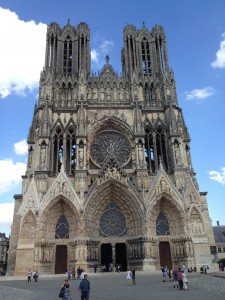
The trip is over and we are back home.
I’ve had a few days to reflect.
If there is a common thread between the First Crusade and the Carolingian Renaissance that is applicable today for Christians it is the importance of Christian leadership to the kingdom of God.
But for the Church, the Middle Ages would have been a dark ages.
The Church, through its system of monasteries preserved a common language (Latin), preserved classic literature through its libraries and copying of manuscripts, created new literature and art, and provided for the education of society.
What other government or institution in West would have been in a position to do that? What other government or institution did so? The answer to both questions is “None.”
Charlemagne was a visionary. He recognized the importance of education, even though he never learned to write (he could read). He established schools in every dioceses, and he expanded educational opportunities to those outside of the nobility so that education was available not just based on birth but merit.
Charlemagne protected the West from the threat of Muslim imperialism, established a uniformity of laws across this kingdom and propagated the spread of the Gospel throughout what is today Europe. Charlemagne initiated a renaissance that would long outlive him. It is not an exaggeration to say Charlemagne helped preserve the West for the Gospel.
Similarly, Godfrey de Bouillon rose and met the challenge of his day, which was the threat of Muslim imperialism. Godfrey could have easily chosen to enjoy his own wealth and prosperity in Bouillon. He was a wealthy man, as we saw at his castle in Belgium. But instead Godfrey chose to give it all up to finance and march an army 4,000 miles to fight to protect Christians and the Christian Byzantines Empire from Muslim aggression.
That Godfrey sought not riches or glory, but only the approval of King Jesus, is captured in his response to the attempt of his follows to make him king of Jerusalem: “How can I wear a crown of gold in a city where my Savior wore a crown of thorns?” He settled for the title, “Defender of the Church of the Holy Sepulcher.”
As a result of Godfrey de Bouillon and others like him, Constantinople and the Byzantine Empire survived another 350 years, and Europe was protected until it fought its decisive battle in 1529 at the Siege of Vienna.
Neither Charlemagne, nor Godfrey de Bouillon were clergymen. They were however Christian leaders who rose to meet the challenges of their day to preserve a world for the kingdom of God.
The question for us is to determine what challenges face us today that require Christian leadership to preserve the world for the expansion of the kingdom of God.
Those who identify the challenges and step up to lead and to meet them will fulfill their duty as citizens of the kingdom of God. They will stand in the tradition of Charlemagne, Godfrey de Bouillon and other Christians before them who had the courage to answer King Jesus’ call to change the world in their time. GS

